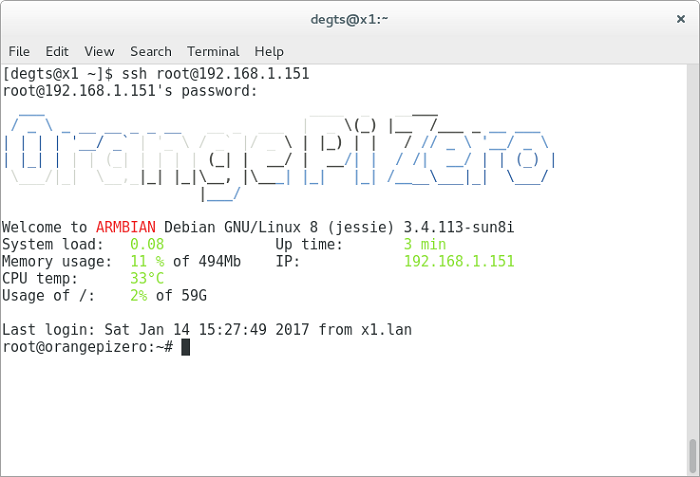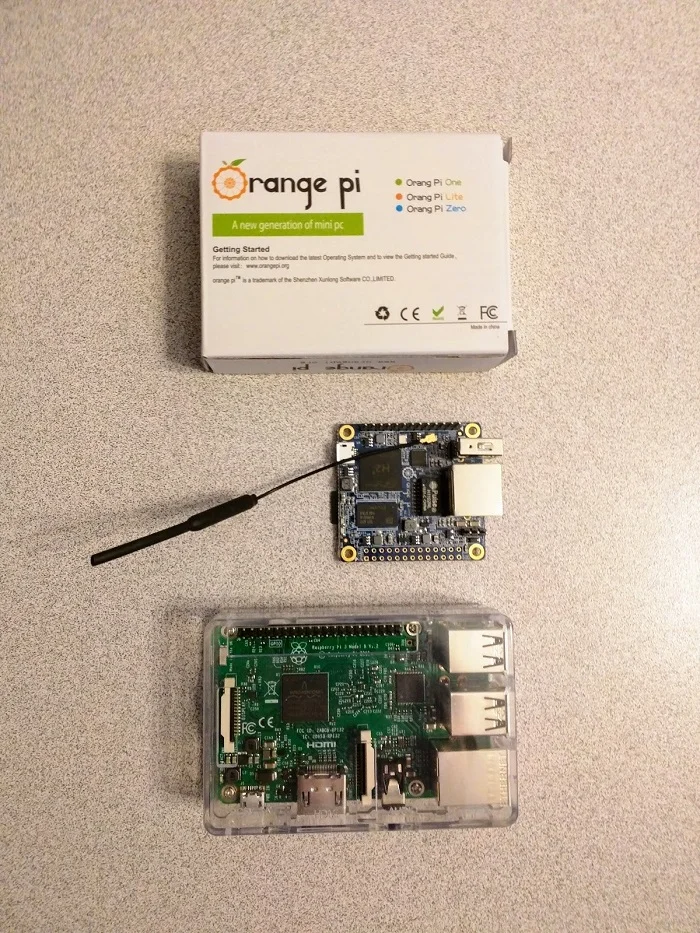[ad_1]
As open source-powered hardware like Arduino and Raspberry Pi becomes more and more mainstream, its cost keeps dropping, which opens the door to new and innovative IoT and STEM applications. As someone who’s passionate about both, I’m always on the lookout for new innovations that can be applied in industry, the classroom, and my daughter’s robotics team. When I heard about the Orange Pi as being a “Raspberry Pi killer,” I paused to take notice.
Despite the sour sounding name, the Orange Pi Zero intrigued me. I recently got my hands on one and in this article share my first impressions. Spoiler alert: I was very impressed.
Why Orange Pi?
Orange Pi is a family of Linux-powered, single board computers manufactured by Shenzhen Xunlong Software Co., Limited, and sold on AliExpress. As with anything sold on AliExpress, be patient and plan ahead for shipping times of two to four or more weeks, because the products are shipped directly from mainland China to locations around the world.
Unlike the Raspberry Pi, which has had a small but growing family of single board computers for different price points, form factors, and features, the number of Orange Pi boards is much larger. The good news is that you have a tremendous amount of choice in the application you want, but the bad news is that amount of choice could be overwhelming. In my case, I went with the Orange Pi Zero 512MB version, because it has the right balance of features and is priced for use in high school, academic environments.
To see a high-resolution image with all the specs, go to the Orange Pi Zero website.
Specifically, I needed the device to be as inexpensive as possible, but still useful out of the box, with Internet connectivity for SSH and IoT applications. The Orange Pi Zero meets these requirements by having onboard 10/100M Ethernet and 802.11 b/g/n Wi-Fi for Internet connectivity. It also has 26 Raspberry Pi-compatible GPIO ports for connecting sensors for IoT applications. I went with the 512MB version of the Orange Pi Zero over the 256MB version because more memory is typically better and it was only $2 more. Out the door, the unit was US $12.30 shipped, which makes it cost effective for classroom environments where experimentation and creating magic smoke is encouraged.
Compared to a $5 Raspberry Pi Zero, the Orange Pi Zero is only a few dollars more expensive, but it is much more useful out of the box because it has onboard Internet connectivity and four CPU cores instead of one. This onboard networking capability also makes the Orange Pi Zero a better gift than a Raspberry Pi Zero because the Raspberry Pi Zero needs Micro-USB-to-USB adapters and a Wi-Fi USB adapter to connect to the Internet. When giving IoT devices as gifts, you want the recipient to enjoy the product as quickly and easily as possible, instead of giving something incomplete that will just end up on a shelf.
Out of the box experience
One of my initial concerns about the Orange Pi is that the vendor and community support wouldn’t be as strong as the Raspberry Pi Foundation’s and its community’s support, leaving the end user all alone putting in extra effort to get the device going. If that’s the case, I’d be reluctant to recommend the Orange Pi for classroom use or as a gift. The good news is that the Orange Pi Zero worked well right away and was actually easier to get going than a Raspberry Pi.
The Orange Pi arrived in my mailbox two weeks after ordering. I unpacked it and got it up and running in a matter of minutes. Most of my time was spent downloading the operating system. The Orange Pi can run a variety of operating systems, ranging from Android to Debian variants. I went with Armbian as it appeared to be the most popular choice for Orange Pi enthusiasts. Since Armbian supports many ARM-based single-board computers, you need to select the right Armbian build for the Orange Pi Zero. By following the Getting Started section of the Armbian User Guide, I was easily able to image a microSD card, insert the microSD card and Ethernet cable, power the unit with an existing 3A Micro-USB power adapter I use with my Raspberry Pis, and SSH into it.

SSHing into the Orange Pi Zero.
Once SSHed in via Ethernet, I was able to connect to my wireless access point easily using nmtui-connect. Then I performed an apt-get update && apt-get upgrade and noticed that the update ran much faster than a Raspberry Pi Zero and closer to the performance of a Raspberry Pi 3. Others have observed similar results, too. It may not be as fast as a Raspberry Pi 3, but I wasn’t planning to sequence genomes or mine Bitcoin with it. I also noticed that Armbian automatically resizes the root partition to fill the entire microSD card, which is an explicit, manual, and sometimes forgotten step when using Raspbian. Finally, for the US $12 price, three times as many students can learn on their own Orange Pi Zero as compared to a $35 Raspberry Pi 3, and you can give an Orange Pi Zero to three times as many friends.

The Orange Pi Zero form factor compared with the Raspberry Pi 3.
Closing thoughts
The Orange Pi is definitely a solution looking for problems. Given its low cost, ability to get up and running quickly, relatively quick performance, and GPIO-pin compatibility with Raspberry Pi, the Orange Pi, and Orange Pi Zero in particular, should definitely be on your short list for experimentation in your workshop, classroom, or robot.
Have you tried the Orange Pi? I’d love to hear about your experiences in the comments below.
[ad_2]
Source link